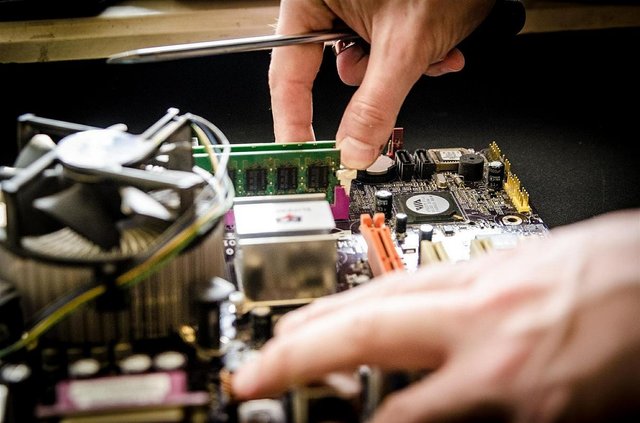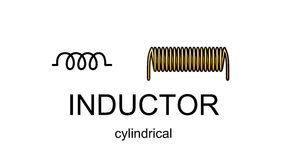Introduction to Basic Electronic Components #6: Come Learn How to Build Basic Electronic Devices

A new day, a new chapter to understanding basic electronic components. Day by day we break those barriers limiting us from understanding basic electronics.
Who would have believed we would go this far. We talked about the resistors, the capacitors , the diodes, and even learnt how to use breadboards to connect circuits, today we take a step further into the Introduction to Basic Electronic Components Series we started last week. If you missed the previous posts do check it out using the link below
Introduction to Basic Electronic Components #1
Introduction to Basic Electronic Components #2
Introduction to Basic Electronic Components #3
Introduction to Basic Electronic Components #4
Introduction to Basic Electronic Components #5
For today we will look at inductors; How they function in the electronic world, why we need them and so much more. STAY TUNED
The Inductor
What is an inductor?
An inductor is simply a coil of insulated wire. Yes, it's just a coil of wire but it's range of application in the electrical and electronic field is vast. The image and symbol of an inductor is given below

If it's just a simple coil of wire then why are we here? Shouldn't I just close this page and move on to a rather incredible and better post? Don't do that just yet, you will miss it all.
From Electromagnetism we know that a current carrying conductor produces a magnetic field around it. But guess what when you turn the current carrying conductor to a coil you bring the magnetic field closer. And when you place a very good conductor in the coil you make the magnetic field generated stronger. This is the starting point to understanding inductors.
How do Inductors work?
So just as electromagnetism said it, when you connect an inductor to a circuit current flows through it, generating a magnetic field (induced emf). It is good I point out something funny about inductors. When this magnetic field is getting set up by the inductor current doesn't flow.
This is momentarily, depending on how large the inductor is, as the size of the inductor determines how long before the magnetic field around the inductors sets up. For the few seconds an inductor is just connected the current sets up a magnetic field around the inductor and current doesn't flow through. It's just there setting up the magnetic field.
It is after the magnetic field is set up that current starts flowing through the curcuit. So for the short period of time the field is being set up the inductor behaves like a resistor bringing to light my previous statement from my previous post
that all basic electronic components offer some form of resistance
An inductor behave like a Time Dependent Resistor. Does it ring a bell, kind of similar to capacitors, but unlike capacitors that their resistance increases as current passes through them and they charge, an inductor's resistance reduces as the magnetic field is being set up.
If the current flowing through the inductor for any reason stops the magnetic field around the inductor collapses causing current to flow in the reverse direction according to Lenz's Law which states that
"The direction of current induced in a conductor by a changing magnetic field due to Faraday's law of induction will be such that it will create a magnetic field that opposes the change that produced it."
Why do we need Inductors?
Understanding how inductors function is key to understanding how they can be used in our circuits.
Some of the uses of inductors includes:
1. Filters
If direct current is allowed to flow through an inductor a magnetic field would simply be set up and the resistance of the inductor will reduce whereas if an alternating current flows through an inductor before the magnetic field sets up, the current reverses.
This actually depends on the frequency of the alternating current. The higher the frequency the more it seems as though no current flows(high resistance) because the magnetic field never sets up and current never flows through the inductor.
Inductors are used in this way alongside capacitors as filters. An Inductor as an electric filter is used to restrict currents with high frequency. This is termed low pass filter because only current with low frequency depending on the inductor is allowed to pass through.
2. In Transformers
With the combination of two inductors a transformer can be made.
The number of turns of the inductors determine how the transformers function, that is either as a step down or step up transformer. But more on that later.
3. In Motors
Using the principle of electromagnetism inductors can be used as motors
From Fleming left hand we know that a conductor carrying current in a magnetic field experiences a force perpendicular to the flow of current. This force can be maximized and used in motors to turn our machines.
4. Energy Storage
Inductors just as capacitors can be used as energy stores
A capacitor stores energy in the form of charge on its plate whereas an inductor stores energy as magnetic field. But unlike capacitors that retain their energy (charges) even after the current stops flowing, inductors can't store their energy for long as the magnetic field collapses immediately after the current stops flowing.
5. In Radios
Inductors are used alongside capacitors to tune signals in radios. This is possible through resonance
So whenever you are turning your radio knobs to get the right signal always remember you are making use of inductors.
Conclusion
In the electronic world inductors are basically used as filters in DC power supply circuits. They can also be used to store energy but that depends on the designer as the energy stored in inductor doesn't last, in this case capacitors are more preferred to inductors.
Athough I know I moved to far away from the electronic line to the electric, there was no other way to explain inductors. This is because the principles guiding the use of inductors are kind of electrical, and besides the electronic and electrical world are intertwined.
I guess this is it for now. Hope you enjoyed it. Until next time.
Reference:
Image Credit:
- Image 1 from pixabay.com
- Image 2 from nl.dreamstime.com

It's a nice write up, easier to comprehend, simple and less stressful to understand... Really loved it... Keep it up
I am lovin it my friend.
Upvoted
Am glad you liked it
Congratulations @kenadis! You have completed some achievement on Steemit and have been rewarded with new badge(s) :
Click on any badge to view your own Board of Honor on SteemitBoard.
For more information about SteemitBoard, click here
If you no longer want to receive notifications, reply to this comment with the word
STOP